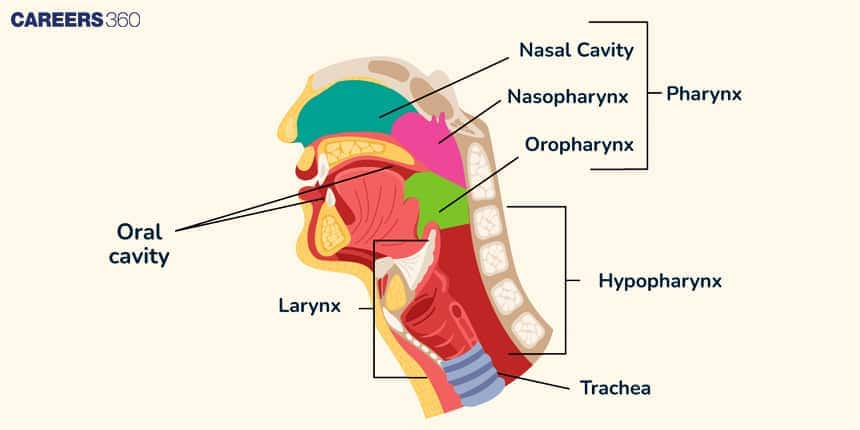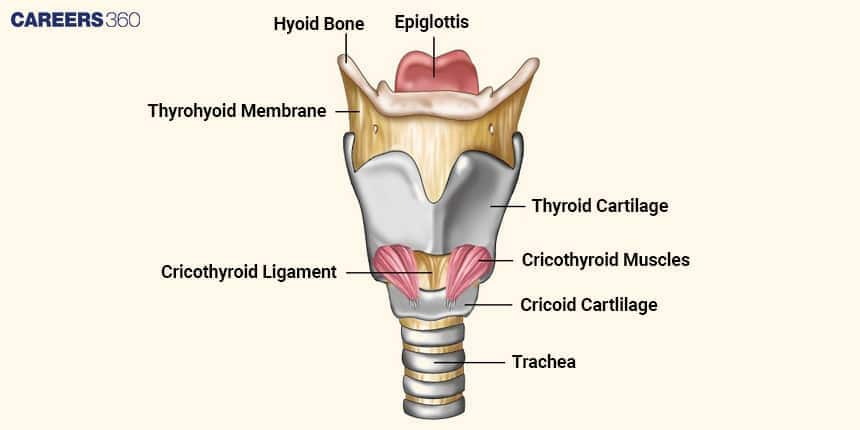Difference Between Pharynx And Larynx: Overview, Definition & Divisions
Understanding the difference between the pharynx and larynx, especially as associated with human anatomy, is vital to understanding other aspects of the respiratory and digestive systems. The following write-up makes it easier to understand the anatomy, functions, and importance of the two structures. This is one of the topics from the Digestion and Absorption chapter of Biology.
Latest: NEET 2024 Paper Analysis and Answer Key
Don't Miss: Most scoring concepts for NEET | NEET papers with solutions
New: NEET Syllabus 2025 for Physics, Chemistry, Biology
NEET Important PYQ & Solutions: Physics | Chemistry | Biology | NEET PYQ's (2015-24)
- Basics concept of Larynx and Pharynx
- Anatomy of Larynx and Pharynx
- Difference between Pharynx and Larynx

Basics concept of Larynx and Pharynx
Sites of the pharynx are the muscle tubes within the body and serve the respiratory and digestive systems it extends from the skull base to the oesophagus and is further divisible into three parts such as; nasopharynx, oropharynx, laryngopharynx.
The larynx is commonly known as the voice box. It is located inferior to the pharynx. The larynx plays an important role in phonation, air passage, and protecting the lower airways. The main structures of the larynx include the thyroid cartilage, the cricoid cartilage, the epiglottis, and the vocal cords.
Also Read
Anatomy of Larynx and Pharynx
The anatomy of both pharynx and larynx has been discussed below:
Anatomy of the Pharynx
The pharynx lies just posterior to the nasal and oral cavities. It is a region of the throat that connects the nasal cavity and the mouth to the larynx and oesophagus. The pharynx can be divided into three regions:
Nasopharynx: The superior region of the pharynx that is associated with the nasal cavity
Oropharynx: The middle region of the pharynx that is associated with the mouth
Laryngopharynx: The inferior region of the pharynx that connects to the larynx and oesophagus

Anatomy of the Larynx
The larynx is located just inferior to the pharynx and anterior to the oesophagus. The larynx is constructed of
Thyroid cartilage: This is the largest cartilage, and it is commonly referred to as the Adam's apple.
Cricoid cartilage: Ring-like cartilage that is inferior to the thyroid cartilage
Epiglottis: A flap that closes over the trachea when swallowing
Vocal cords: Folds of tissue that produce sound.

Difference between Pharynx and Larynx
Some of the major difference between the pharynx and the Larynx is discussed below:
Characteristic | Pharynx | Larynx |
Location | Present behind nasal and oral cavities | Present below pharynx, in front of the oesophagus | |
Structure | Made up of three parts that are nasopharynx, oropharynx and laryngopharynx | Made up of thyroid cartilage, cricoid cartilage, epiglottis, vocal cords |
Function | Helps in swallowing, air passage, and immune function | Helps in air passage, voice production, protection |
The pharynx and larynx are important structures in the human body, with rather different functions. At the same time, the pharynx generally performs a primary role during deglutition and as a defence of the body against infection, while the larynx primarily functions in voice production and the protection of airways.
Also Read
Frequently Asked Questions (FAQs)
The pharynx serves both the respiratory and digestive systems, while the larynx is mainly engaged in the manufacture of voice, besides acting as a safeguard to the passage of air.
The pharynx has pharyngeal recesses called the ones of luschka, which trap the pathogens and destroy them, thus serving the purpose of the body's immunity.
The vocal folds are the vibratory tissues in the larynx.
Laryngitis, vocal cord nodules, and thyroid cancer or laryngeal cancer are common problems of the larynx.
The epiglottis closes over the trachea during swallowing on the passage of food and liquids to keep any prototype from entering the airway.
Also Read
30 Nov'24 03:25 PM
26 Nov'24 05:38 PM
25 Nov'24 06:43 PM
25 Nov'24 05:45 PM
25 Nov'24 04:48 PM
25 Nov'24 03:52 PM
23 Nov'24 04:30 PM
23 Nov'24 10:03 AM